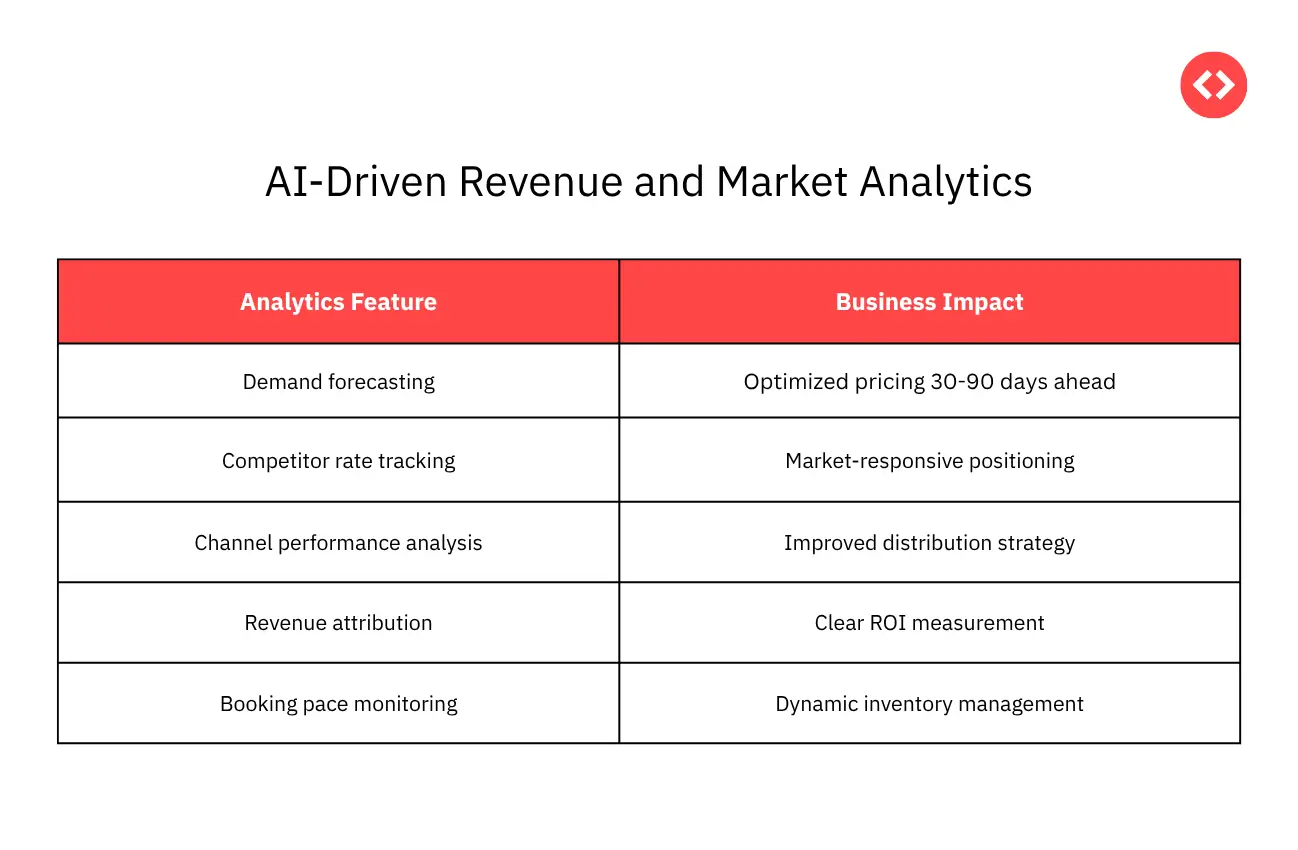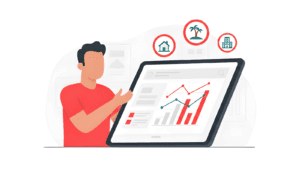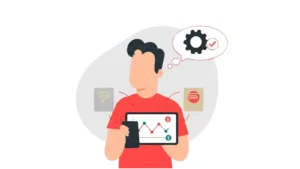Updated : Nov 20, 2025
Choosing the right Property Management System (PMS) with automated OTA pricing capabilities is crucial for hospitality businesses seeking to maximize revenue and streamline operations. With the vacation rental market projected to generate between $95.78 billion and $195.45 billion globally by 2025, selecting a PMS that seamlessly integrates with multiple online travel agencies while automating dynamic pricing has become essential for staying competitive. This comprehensive guide will help you navigate the key features, evaluation criteria, and strategic considerations for selecting a future-proof PMS that drives measurable revenue growth across all your distribution channels.
Understanding Automated OTA Pricing and PMS Integration
Automated OTA pricing refers to using software tools to adjust accommodation rates on online travel agencies like Booking.com and Airbnb based on real-time market data and predefined strategies. This technology eliminates the manual process of updating rates across multiple platforms, reducing errors while maximizing revenue opportunities through data-driven pricing decisions.
A Property Management System serves as the central hub that unifies reservations, housekeeping, guest data, and pricing management into a single platform. When integrated with channel managers and OTAs, a robust PMS enables real-time rate synchronization across all distribution channels. This integration streamlines hotel operations by automatically pushing rate changes to connected platforms, ensuring consistency and eliminating the risk of overbookings or pricing discrepancies.
The synergy between dynamic pricing algorithms and PMS integration creates a powerful revenue optimization engine. While manual OTA pricing requires constant monitoring and individual platform updates, automated systems can process market data, competitor analysis, and demand forecasting to adjust rates instantly across dozens of channels simultaneously.
Your PMS is Only as Good as Its Pricing.
Selecting the right PMS is step one. Connect your choice to PriceLabs to guarantee **real-time dynamic pricing and market intelligence** that instantly syncs rates across all your OTAs—eliminating lag and maximizing every booking opportunity.
Start Free TrialKey Features to Look for in a PMS for Automated OTA Pricing
Revenue managers and operators need a feature-driven approach when selecting a PMS to ensure their technology stack can adapt to evolving market conditions and business growth. The right combination of capabilities creates a foundation for sustainable revenue optimization and operational efficiency.
Real-time Pricing Updates Across OTAs
Real-time pricing updates instantly push new rates from your PMS to all connected OTAs, minimizing discrepancies and lost revenue opportunities. This capability is foundational for competing effectively across multiple channels and maximizing occupancy during high-demand periods.
Leading PMS platforms like Mews and Cloudbeds natively support automated, real-time price synchronization, enabling properties to respond to market changes immediately. When a pricing algorithm detects an opportunity to increase rates due to high demand or decrease them to capture bookings during slower periods, the system automatically updates all connected channels within minutes.
PriceLabs seamlessly integrates dynamic pricing across 150+ PMS and channel managers, ensuring that rate changes flow efficiently from the revenue management system to each PMS and OTA. This integration eliminates the lag time that can cost properties bookings when competitors adjust their rates faster.
The rate update process typically follows this flow: the pricing algorithm generates a new rate → the PMS receives and validates the update → the channel manager distributes it to connected OTAs → OTAs display the updated rates to potential guests. Properties should look for PMS solutions that complete this entire cycle in under 15 minutes.


Seamless Integration with Channel Managers and OTAs
Channel managers act as a bridge between your PMS and OTAs, enabling real-time rate and availability updates across multiple distribution platforms. This integration architecture is essential for maintaining inventory accuracy and pricing consistency across all sales channels.
Modern cloud-based platforms like Hostaway combine reservation software, channel manager, booking engine, and PMS functionality in a unified solution. This integrated approach reduces the complexity of managing multiple vendor relationships while ensuring seamless data flow between systems.
Direct API connections offer superior performance compared to basic export/import methods, providing faster updates and more reliable data synchronization. Properties should prioritize PMS solutions that offer native integrations with major OTAs, including:
- Booking.com and Booking.com for Business
- Expedia Group (Hotels.com, Vrbo, Expedia)
- Airbnb and Airbnb for Work
- Google Hotel Ads and Google Travel Partner
- Agoda and regional OTA platforms
The quality of these integrations directly impacts your ability to compete effectively across channels and maintain accurate inventory management.
Support for Channel-Specific Pricing and Markups
Channel-specific pricing enables properties to set unique rates or apply markups for individual OTAs to account for commission fees, market dynamics, and strategic positioning. This granular control is essential for maintaining healthy profit margins while optimizing performance on each distribution channel.
Advanced PMS platforms support customizable channel adjustments, allowing properties to send different rates to channels via base-rate adjustments. For example, a property might apply a 15% markup to Booking.com rates to offset their commission structure while maintaining competitive positioning on direct booking channels.
This feature becomes particularly valuable when managing properties across different market segments or when certain OTAs perform better for specific room types or seasonal periods. Properties can optimize their channel mix by adjusting rates to reflect the actual value and cost of each distribution partnership.
AI-Driven Revenue and Market Analytics
AI-driven analytics integration within a PMS uses machine learning to automatically analyze booking patterns, competitor rates, and local demand trends, generating pricing recommendations that adapt in real time for maximum revenue potential. These insights transform raw data into actionable strategies that drive measurable results.
Next-generation PMS solutions leverage artificial intelligence to enhance operational efficiency and guest experiences while providing revenue managers with sophisticated forecasting capabilities. Robust reporting should include RevPAR analysis, occupancy forecasts, channel performance metrics, and competitive positioning data.
PriceLabs integrates advanced analytics directly into the PMS workflow, providing insights on market trends, booking pace, and revenue optimization opportunities. Key analytics features to evaluate include:


Scalable Cloud-Based Architecture and Collaboration Tools
A cloud PMS is hosted online, enabling access from anywhere while reducing IT overhead and supporting automatic updates and security patches. This architecture provides the flexibility and reliability needed for modern hospitality operations.
Cloud-native PMS platforms free staff from administrative burdens to focus on guest experience, enhancing overall service quality. The scalability of cloud architecture ensures that your PMS can grow with your business without requiring significant infrastructure investments.
How to Evaluate PMS Options for Your Hospitality Business
Selecting the right PMS requires a systematic evaluation process that considers your current operations, growth plans, and technology ecosystem. A data-driven approach focusing on long-term fit rather than immediate needs ensures your investment delivers sustained value as your business evolves.
Begin by conducting a comprehensive audit of your property portfolio, existing technology stack, team capabilities, and revenue goals. This assessment provides the foundation for creating detailed evaluation criteria and vendor comparison frameworks.
Assess Your Property Portfolio Size and Complexity
Different PMS solutions are specifically designed for various hospitality segments, from boutique properties to large-scale portfolios. Understanding your operational complexity helps narrow the field to platforms that can effectively support your specific requirements.
Small hotels and independent properties often benefit from solutions like Little Hotelier, which offers essential PMS functionality without enterprise-level complexity. Mid-market properties typically require more sophisticated features, such as those offered by platforms like Cloudbeds, which provide multi-property management, unified guest profiles, automation, and contactless check-in.
Large portfolios and branded hotels need enterprise-grade solutions, such as Oracle Hospitality, that can handle complex rate structures, extensive reporting requirements, and integration with corporate systems.


Prioritize User Experience and Ease of Use
Systems should be intuitive and user-friendly, enabling staff to manage daily operations effortlessly, regardless of their technical expertise. The learning curve associated with PMS adoption directly impacts operational efficiency and staff satisfaction.
Look for platforms that offer drag-and-drop reservation management, mobile-responsive dashboards, and comprehensive help resources. The user interface should streamline common workflows, such as check-in/check-out, room assignment, and pricing updates.
Key user experience factors to evaluate include:
- Intuitive navigation and logical menu structure
- Contextual help and training resources
- Mobile optimization for on-the-go management
- Customizable dashboards and reporting views
- Keyboard shortcuts and bulk operation capabilities
Verify Integration Capabilities with Existing Systems
Smart integrations reduce operational silos, eliminate duplicate data entry, and future-proof your technology investments. Before selecting a PMS, create a comprehensive inventory of your existing platforms, including accounting software, CRM systems, housekeeping management tools, and direct booking engines.
Modern PMS platforms offer integrated suites that include PMS functionality, booking engines, channel managers, revenue management tools, and payment processing. This comprehensive approach reduces integration complexity while ensuring seamless data flow between systems.
Evaluate integration capabilities using these criteria:
- Native API connections vs. third-party middleware
- Real-time vs. batch data synchronization
- Bidirectional data flow capabilities
- Integration setup and maintenance requirements
- Vendor support for custom integrations
Review Reporting, Analytics, and Automation Features
Sophisticated reporting and automation capabilities enable faster, more informed decision-making while reducing manual workload. Your PMS should provide comprehensive analytics covering occupancy rates, average daily rate (ADR), revenue per available room (RevPAR), and multi-channel performance metrics.
Advanced platforms automate routine tasks and provide drag-and-drop reservation systems that streamline operations. Look for automation capabilities in guest communications, rate updates, inventory management, and operational workflows.
Essential analytics and automation features include:
- Customizable dashboards with key performance indicators
- Automated pricing recommendations and updates
- Guest communication workflows and templates
- Housekeeping and maintenance task automation
- Financial reporting and revenue attribution
- Market trend analysis and competitive benchmarking
Compare Pricing Models and Total Cost of Ownership
PMS pricing models vary significantly, including per-room fees, per-property charges, per-booking commissions, tiered feature packages, and volume-based pricing. Understanding the total cost of ownership requires evaluating not just monthly payments but also implementation costs, training expenses, support charges, and potential upgrade fees.
Consider these cost factors when comparing options:
- Monthly or annual subscription fees
- Implementation and setup costs
- Staff training and onboarding expenses
- Integration fees for third-party connections
- Support and maintenance charges
- Transaction fees for payment processing
- Upgrade costs for additional features or capacity
Create a comprehensive cost-comparison worksheet that projects expenses over 3 years to accurately assess the financial impact of each PMS option.
Top Considerations for Scaling Automated OTA Pricing with Your PMS
Successfully scaling automated OTA pricing requires a PMS architecture that can accommodate growth from single properties to extensive portfolios while maintaining operational efficiency and revenue optimization capabilities. The scalability of your chosen platform directly impacts your ability to expand without encountering system limitations or exponential cost increases.
Multi-property management introduces complexity in rate coordination, inventory allocation, and performance analysis across diverse markets and property types. Your PMS should provide centralized control with property-specific customization, enabling consistent brand standards while allowing local market optimization.
Consider these scaling factors when evaluating PMS options:
- Cross-property reporting and consolidated analytics
- Centralized rate management with local override capabilities
- Automated inventory distribution across channels
- Role-based access for distributed management teams
- API capabilities for custom integrations and workflows
- Performance monitoring and optimization tools
The most successful hospitality operators choose PMS platforms that grow with their business, providing the foundation for sustained revenue growth and operational excellence across their entire portfolio.






